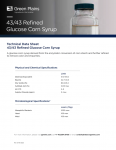DGAC highlights nutritional disparities from latest dietary guidelines review

The DGAC examined the reduction of animal-based and carbohydrate-rich foods and nutrient density assessments yesterday during its sixth meeting.
The meeting focused on clarifying conclusions to evolve US dietary patterns with an emphasis on nutrient goals and health equity.
The committee emphasized the ongoing review of dietary patterns (e.g. Mediterranean, vegetarian, etc.) across different life stages, and reducing animal-based and carbohydrate-heavy foods, while still ensuring nutrient density.
Removal of animal-based foods significantly reduces key nutrients
While the prevalence of diets that exclude animal-source foods in the US is low, public interest in examining the nutritional implications of these diets is growing, according to the committee.
The committee’s food pattern modeling analyses evaluated the nutrient gaps that arise when animal sources of products are removed, as in the 2020 healthy vegetarian dietary patterns for ages two years and older. The removal of animal-based products include dairy, fortified soy alternatives and eggs without substituting them with other foods.
The committee found that removing animal-source foods led to substantial reductions in key nutrients including protein, vitamins A, D, E, B12, niacin, B6, choline, calcium, iron, magnesium, potassium and zinc.
While fortified soy products could fill some of these nutrient gaps (e.g. calcium, vitamin D), they did not adequately solve these deficiencies, according to the committee’s findings.
Specific nutrient concerns also varied by age and sex. For instance, protein and B12 are essential for older adults and calcium for adolescent girls.
The committee cautioned against removing all animal-based foods from diets and to implement thoughtful dietary planning to ensure individuals receive nutrition from other sources, in addition to considering nutrient gaps and potential replacements for specific age groups.
Reducing carbohydrate-containing foods can significantly increase nutrient gaps across all ages
The committee’s analysis on the nutrient implications of removing major carbohydrate-containing food groups focused on grains, dairy, fruits and starchy vegetables. Additionally, the model was based on the removal of carbohydrate-containing foods without substitution to understand the impact on nutritional intake.
Based on the committee’s findings, removal of these foods led to significant nutrient deficiencies across all age groups. The main nutrients affected were vitamins (e.g. A, B1, B2, B3, B6, B12, folate and vitamin C) and minerals (e.g. calcium, iron, magnesium, potassium, phosphorus, zinc and copper), along with fiber and choline.
Additionally, pregnant and lactating women could become deficient in vitamins C, B6 and B12 when these foods are removed, the committee noted.
The dietary patterns analyzed showed that carbohydrate-rich foods contribute about 52% of total calories in nutrient-dense diets. Removing these food groups led to a 63% reduction in total calories, a 54% reduction in protein intake, and 27% reduction of total fat, underscoring how interconnected macronutrients are with various food groups.
More specifically, the committee analyzed the removal of food groups to their corresponding vitamins and minerals.
For example, removing grains from the diet can lead to deficiencies in thiamine (B1), niacin (B3) and folate, which are essential for older men and adolescents; eliminating fruit can decrease vitamin C, magnesium and potassium content; removing dairy and fortified soy can significantly reduce calcium and other micronutrients across various age groups; and removing starchy vegetables can lead to vitamin A and fiber deficiencies.
The committee pointed out that although 63% of calories were removed in these models, it is difficult to predict what remaining foods would compensate for lost nutrients. Further, they emphasized that due to the complexities of nutrient clustering in certain foods, the removal of entire food groups can result in broad, systemic nutritional deficiencies.
Rather, the committee recommends careful dietary planning to avoid risks of nutritional inadequacy.
Individuals are drinking more water, less sugary drinks
Water is the most consumed beverage among individuals aged two and up compared to data in 2017 and 2018. Sugar-sweetened beverages across all age groups are showing a declining trend, however the committee pointed to the decrease in the percentage of individuals consuming milk and 100% juice, based on the same time frame.
The committee highlighted the top five nutrients and dietary components from beverages as added sugars, vitamin C, vitamin D, calcium and magnesium.
Data shows that older children (6-11 years) and adolescents (12-19 years) consume higher volumes of beverages compared to younger children (2-5 years), while adults (60 years and up) consume less than younger adults. For adults, alcoholic beverages, tea, coffee and sugar-sweetened beverages are among the most consumed. Nonetheless, the committee found that sugar sweetened beverages are the top food category contributing added sugar.
Fruits, vegetables, dairy and whole grains below DGAC recommendations
For ages one year and up, consumption of critical food groups such as fruits, vegetables (including subgroups like beans, starchy vegetables and dark green vegetables), dairy and whole grains are below recommendations, according to the committee’s findings.
While many food group intakes are below these recommendations, some groups such as total grains, refined grains and total protein foods (including meat, poultry and eggs), are consumed at or above the recommended levels for individuals aged two and above.
The analysis found that under-consumption of these food groups leads to a reduction in dietary protein, fiber, calcium, potassium, magnesium, iron and various vitamins (e.g. vitamins, A, C, D, E and K); simultaneously, the data pointed to an over-consumption of nutrients that should be limited, specifically sodium, added sugars and saturated fat.
Non-Hispanic Asians highlight some notable trends in nutrient intake and dietary patterns. The committee found that this demographic often consumes more fruits, vegetables and whole grains, which contribute to better alignment with dietary recommendations. However, gaps in specific vitamins and minerals, like calcium and vitamin D still need attention, highlighting the complexity of dietary habits across different ethnic groups and socioeconomic factors.
Editor's Note: An earlier version of this story stated that DGAC's sixth meeting is the final meeting. It is not, the seventh and final meeting will be held Oct. 21 and 22.





















